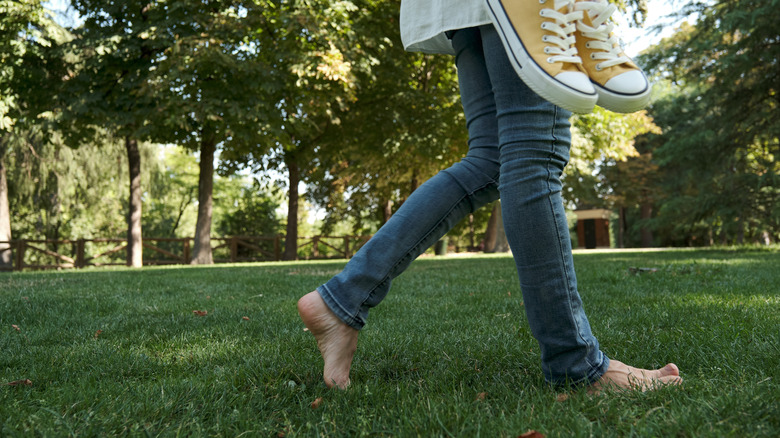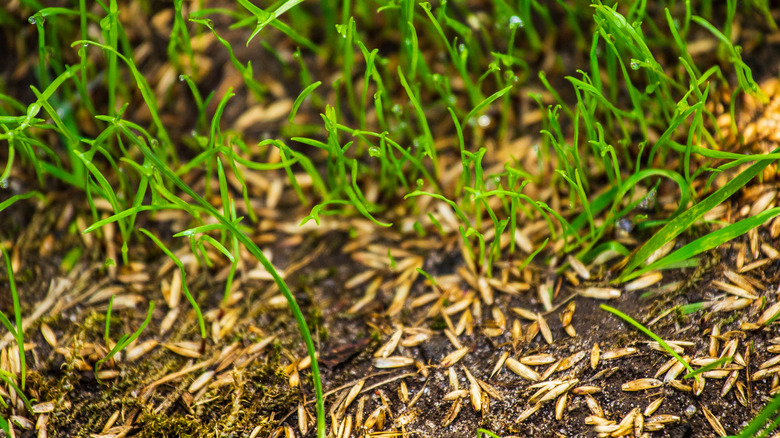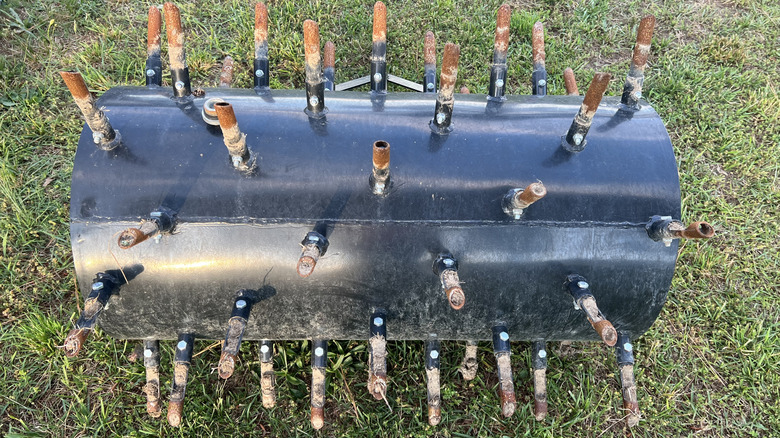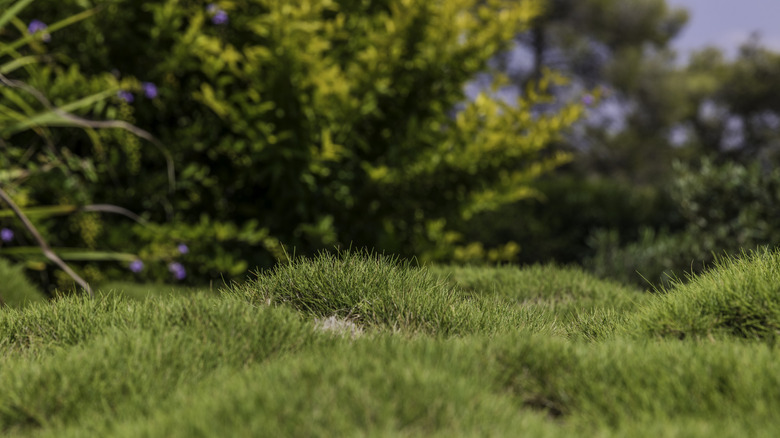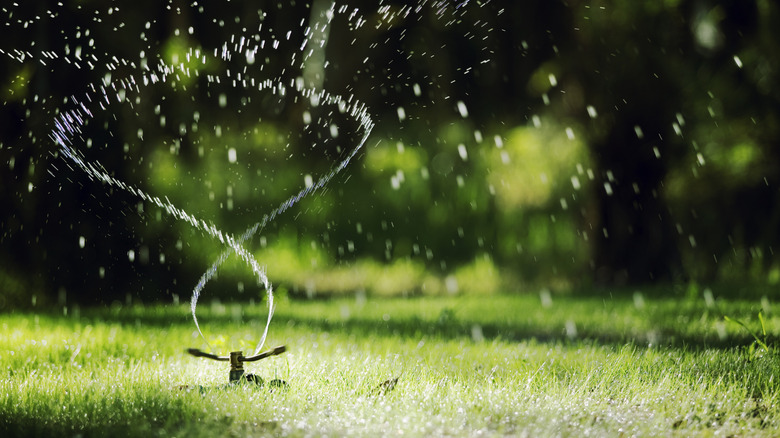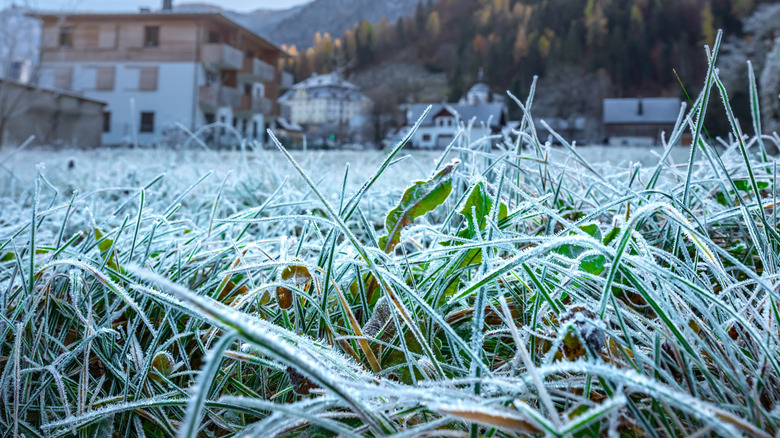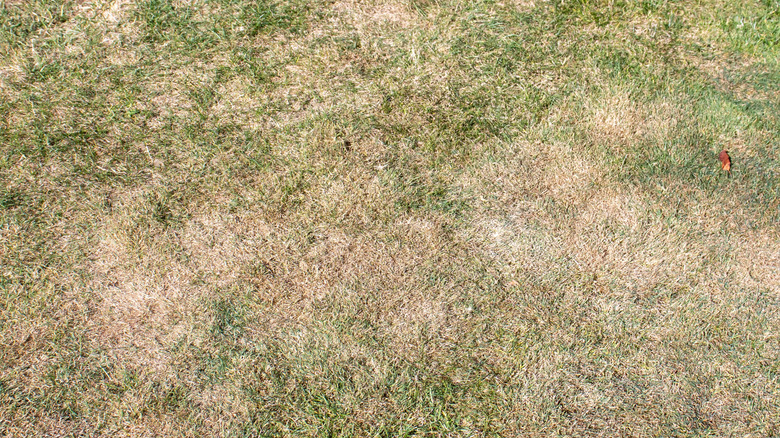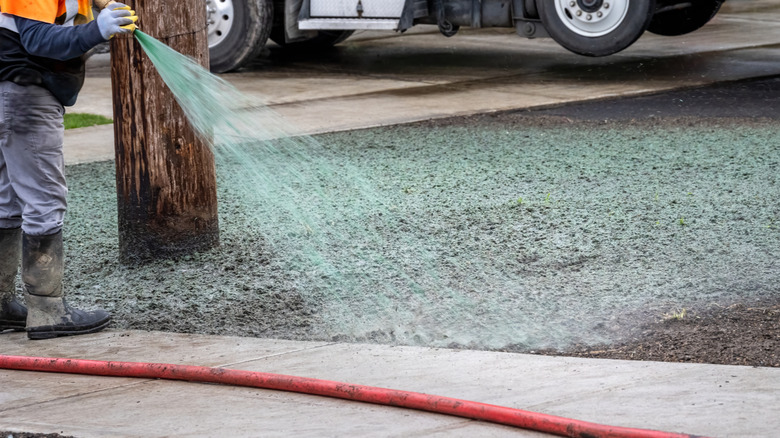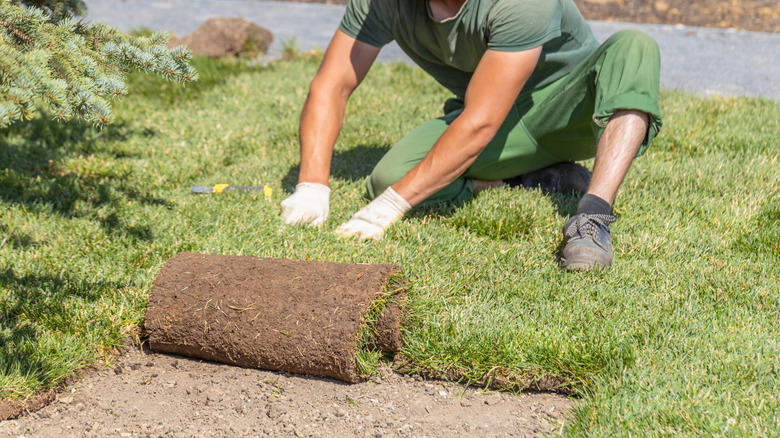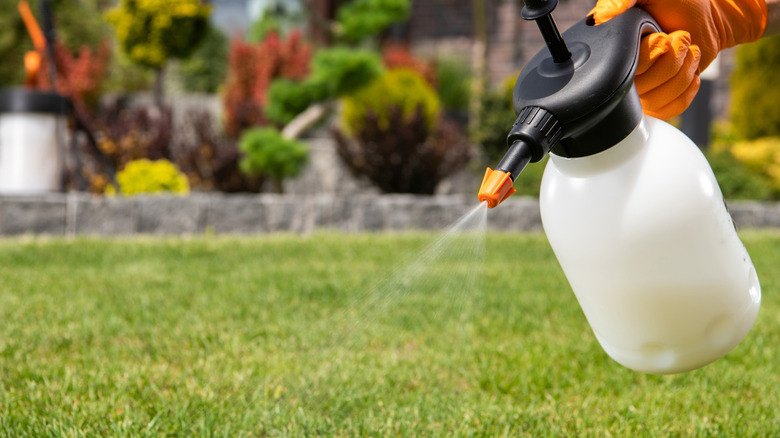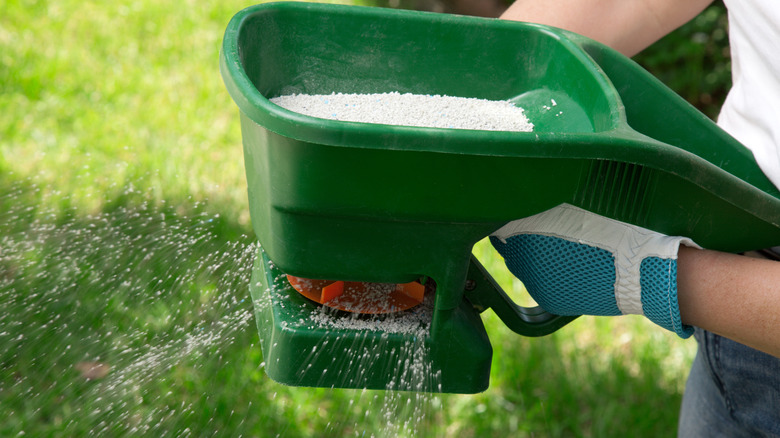10 Times You Should Really Avoid Walking On Your Grass
Turf grasses are perhaps the most popular groundcover across the U.S. They sprawl about, establishing a dense, cushiony mat that you can plod on barefooted or hunker down on with a book. If required, you may even drive over it or let loose your furry friends so they may frolic around with carefree abandon. And usually, your grasses will tolerate the high friction and traffic without a care. However, when such recreational activities fall outside their active growth season, your lawn may take some solid damage, turning brown, bare, or utterly hideous.
For instance, when warm-season grasses grow dormant during winter, they must wait until spring (because that's when they start growing rapidly) to recover from frost injury or winter kill. Unsurprisingly, this calls for a complete embargo on grass-walking unless you're picking up the mail. Similarly, there are other times when you shouldn't be trotting on your turf, such as when it's wet, suffering drought stress, or has been chemically treated. Freshly seeded or overseeded lawns should also be left alone for a certain time to limit traffic damage. That being said, read on to discover all the instances when you should avoid walking on your grass.
Pass up walking after seeding
If you've gone the traditional seeding route to establish new turf, make sure you steer clear of the area for at least four weeks after the seedlings emerge. Though, whenever possible, it's best to avoid walking on the seeded part until after you've mowed the new growth several times. Keeping off the lawn ensures your seeds are in constant contact with the soil before germination and protects the fragile seedlings from trampling once they sprout. Put up barriers around the newly seeded space if your area experiences significant pedestrian traffic.
Don't walk on aerated soil
The whole point of aerating your lawn is to open up soil pockets that have become blocked because of high traffic or rainfall. Aeration also helps reduce the thatch layer. So, when you walk on the grass right after aerating, you risk compacting the soil, negating the benefits of aeration. Besides, walking immediately deprives the grassy blades of sufficient time to repair themselves before they're put to recreational use. Instead, allow the aerated soil to settle down and stay off the grass for about two weeks.
Don't walk on a bumpy lawn
Thinning, diseased, frost-injured, or poorly maintained lawns often develop uneven patches. These bumps present slip hazards, so you should avoid walking on the turf until you've resolved the issue. If the uneven surface stems from poor lawn care or disease, you can level the bumpy lawn by maintaining and watering your lawn properly until a healthy carpet is established. However, the bumps could also stem from earthworm activity. Earthworms generally improve lawn health through natural aeration, but the casings they leave behind pile up over time and create bumpy spots that can also cause you to trip or slip.
Don't walk on wet grass
Your shoes squishing over muddy grass, staining, slipping, and making squelching noises should be reason enough not to walk on a wet lawn. But if that's not a satisfactory deterrent, know that continuing to do so would compact the soil. Since wet soils hold quite a bit of moisture, most of their air pockets are completely closed when trodden on. As a result, the soil particles pack together tightly, blocking access to nutrients and water for the grass. In addition, if your lawn harbors fungal diseases like brown patch, walking on wet grass may accelerate its spread.
Avoid walking after heavy frosts
You should avoid walking on frosty grass as temperatures drop. The same goes for driving on it. That's because frost coats the grassy blades with ice crystals, which then lodge between the plant cells. When you tread on the frost-laden turf, these ice crystals push through into the cells, puncturing and damaging them. Although this doesn't kill the grass entirely, it becomes one of the leading reasons for unwanted brown spots on your lawn after the snow thaws. Unless you're amenable to the turf remaining unsightly, you'll need to reseed the lawn.
Don't amble on drought-stressed lawn
Avoid walking on your grass when the weather is extremely hot and dry. Dry conditions cause the grass blades to experience immense stress, diminishing their growth, quality, and resilience. When they experience foot trampling in this state, they take on even more damage. When unsure, you can check the soil for moisture levels by taking a few steps barefoot — you'll feel it if the grass is completely dry. Alternatively, examine whether the grass blades spring back or lie suppressed when strode over — if you're seeing footprints, your turf is drought-stressed.
Walking right after hydroseeding is inadvisable
Sloped yard owners often go the hydroseeding route. If you're wondering what hydroseeding is, it's the practice of blowing a pre-made blend of seed, fertilizer, mulch, and water on the ground for lawn establishment. As such, this method offers limited seed-to-soil contact vis-à-vis traditional seeding. The germination conditions further worsen when you walk on new hydroseed. The reason is that foot traffic tamps the soil, denying the budding seedlings access to vital nutrients. Walking may also displace the mulch mat. So, wait until the turf reaches the ideal mowing height before stepping on it.
Don't walk on newly laid sod
Freshly laid and irrigated sod doesn't take well to foot traffic — not until it's rooted fully and can access the soil nutrients. For this reason, you must keep the area trample-free for at least two weeks, or even longer if the turf variety so demands (think Zoysia) to ensure full establishment. Otherwise, the lawn may develop thinning spots, necessitating re-establishment. Afterward, err on the side of caution and keep foot traffic light for the following two weeks in case the sod hasn't yet rooted properly.
Don't walk on the lawn after chemical treatment
Walking on freshly treated grass may expose you, your children, and your pets to carcinogenic or toxic chemicals, either through direct absorption or inhalation. You may inadvertently bring the chemicals inside your home, where they may take longer to degrade fully. Most pesticides take over three days to dissipate completely, after which time it may be safe to step on your turf. That said, the label may advise a longer waiting period, which you should observe to ensure safety. Remember, the label is the law.
Keep away from your lawn after fertilization
Following the label is key when feeding your lawns. Most manufacturers recommend keeping off the turf for at least 72 hours after spreading the fertilizer. This timeframe could be longer or shorter, depending on the product. The waiting period is meant to minimize the possibility of the chemicals rubbing against skin and causing sores or irritation. Another rule of thumb is to wait one day after the fertilized lawn is watered, as the fertilizer presents no risk once it dissolves fully.
